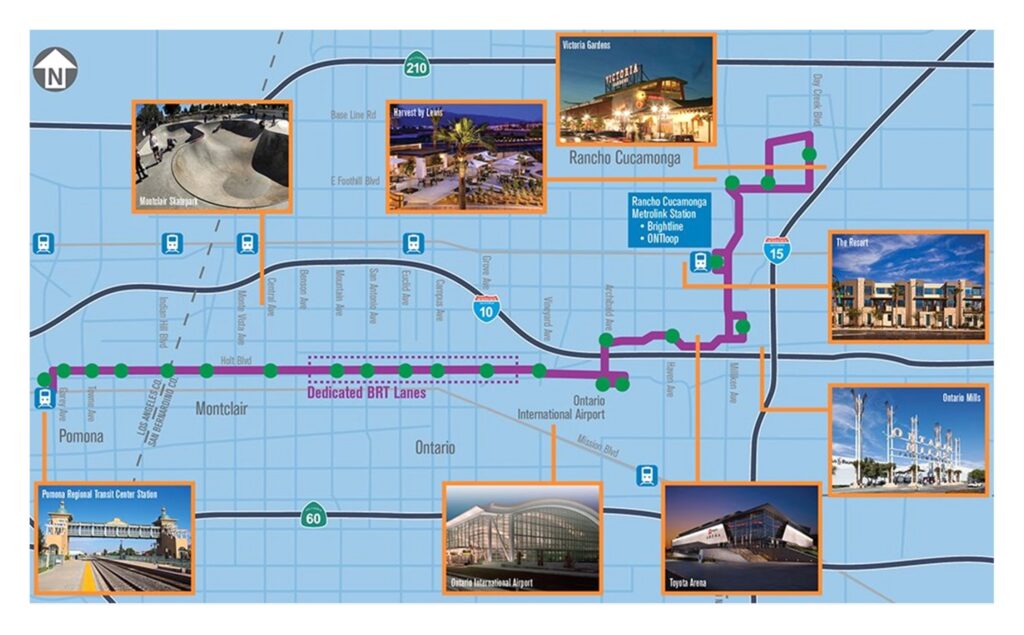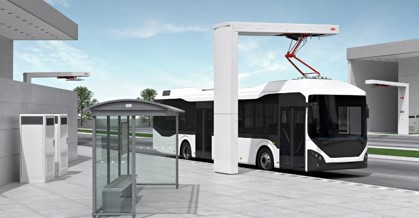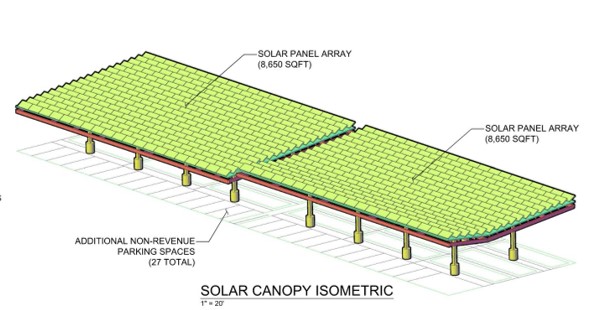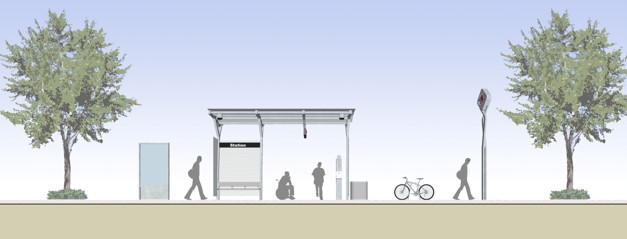West Valley Connector — San Bernardino, CA
Client

- San Bernadino County Transportation Authority (SBCTA)
Project Value 
$150 Million
Market

Electrification, Transportation
Services

Design And Urban Planning, Engineering

We are responsible for phase one of the West Valley Connector Bus Rapid Transit (BRT) project, which is the first stage of the San Bernardino County Zero emission Bus (ZEB) Initiative and second BRT route in San Bernardino County. Phase one of the project is 19-miles long and consists of 15.5 of mixed flow and 3.5-miles of dedicated BRT lanes. The West Valley Connector will serve four cities — Pomona, Montclair, Ontario and Rancho Cucamonga, all located in San Bernardino and Los Angeles Counties.
Goals Of The West Valley Connector Project
- Respond to population and employment growth in stakeholder cities
- Improve customer travel time
- Provide faster, more frequent and direct transit service
- Provide multi-modal connectivity with rail (Metrolink) & aviation (Ontario International Airport)
- Provide direct service to key destinations
- Support transit-oriented development
- Support regional and state climate action goals and greenhouse gas reduction (EV buses)
Mainline Project Technology Considerations

TSP/Communications
- Systems design – Transit Signal Priority to facilitate faster travel time
- Communications – Next Bus Kiosks, CCTV, Emergency Phones, PA System
Zero Emissions Bus (ZEB)
- EV on-route charger at the end of the line station – Pomona Transit Center
Electric Vehicle (EV) Facility Technology Considerations
Electric Vehicle (EV)/Photovoltaic (PV) Canopy
- Installed at existing West Valley Maintenance Facility
- Battery run time/charging & generator analysis
- Southern California Edison (SCE) Charge Ready Program


Zero Emissions Bus (ZEB)
- Includes 18 ZEB bus fleet (15 serving route/3 spares), plus 6 EV (supervisor) passenger vehicle chargers
Implementing BRT Technology For The West Valley Connector
Infrastructure Considerations
- Existing Communication Infrastructure – fiber vs. cellular
- Transit Signal Priority (TSP) – R/W availability for queue jump/dedicated lanes
- Need for Ticket Vending Machines (TVMs); CCTV, PA system, Emergency Phones and Artwork
Implementation Challenges
- Utility Coordination and Impacts; Traffic Controller Compatibility; Jurisdictional Plans for fiber (Smart Poles)
Preparing For The Future
- Vehicle to Infrastructure (V2I) Connected Transit Vehicles with Lane Departure Warning (LDW), Blind Spot Warning (BSW) and Automated Vehicles.
Lessons Learned
Schedule – Grant Application to Construction
- FTA Coordination – Approval to Enter Engineering
- Environmental Clearance
- Coordination and Reporting to Project Management Oversight Consultant (PMOC)
Technology Updates

- Transit Systems Communications/Network Camera updates
- Removal of TVMs & Cellular Communication
- EV Bus actual run times/battery service life
Stakeholder/Utility Coordination
- Multiple Stakeholders/Cities
- Utility Impact Coordination
- New Utility Service Coordination

